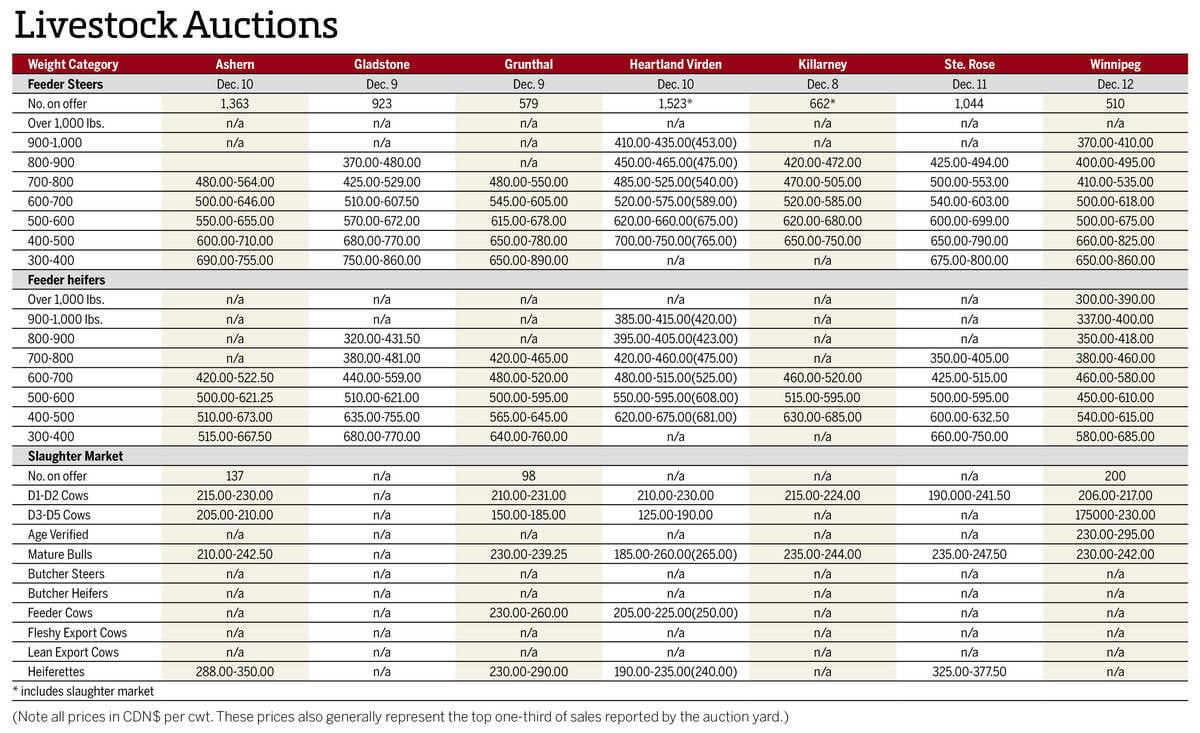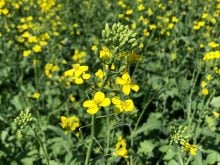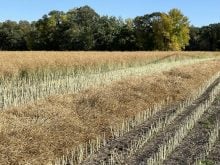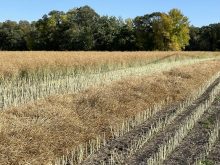The canola harvest on the Prairies is in its early stages and prices on ICE Futures remained rangebound over the course of the week ended Aug. 25.
Canola has been up a little, down a little, a spike here, a bit of a drop there – that’s pretty much been the story ahead of the usual decline in prices once harvest is fully underway.
Over the course of the week, the nearby November canola contact gained $18.30 per tonne, while the January added $17.90. Most of that came from a sudden spike on Aug. 22 when the Chicago soy complex and European rapeseed shot up.
Read Also

Manitoba cattle prices Dec. 16
Here’s what local farmers were getting paid last week for their cattle at Manitoba livestock auction marts; prices covering the week Dec. 8-12, 2025.
Declines in weather conditions in the U.S. and in Europe proved to be stronger than global crude oil prices, which eased back last Monday.
Also, weather conditions during August have underpinned canola values. The heat and dryness are widely believed by the trade to have eroded some of the potential yields on the Prairies. That generated an interesting range of projections ahead of the Aug. 29 Statistics Canada production report.
Analysts and traders who saw the August weather more negatively forecast canola production at around 18.6 million tonnes, while the more optimistic in the trade still considered up to 20.3 million tonnes a strong possibility. In the most recent StatCan report, canola production was projected at 18.4 million tonnes.
Then there’s the crux of the matter: as yields were lost during August, the federal agency held onto the data it had collected up to the end of July. Several voices in the canola market expressed doubts and concerns about the accuracy of the number StatCan will provide on Aug. 29.
Indeed, in using a computer-generated model based on satellite imagery, one must wonder why a month was needed. Other agencies, such as the U.S. Department of Agriculture, often take about a week to process data from computer models.
Regardless of the veracity of the StatCan numbers, the agency should be pressured to release its findings in a much timelier manner.
Besides the Prairie harvest and the StatCan report, other factors could influence the rise and fall of canola prices.
After Australia had a bumper canola crop last year, the country’s farmers appear well set to produce another sizeable bounty this year. Although their canola is still developing, things look promising ‘down under.’
As for the weather in South America, conditions are getting quite dry and fields need seasonal rains. Should those come, crops are expected to be all right. If not, reduced soybean production in Brazil and Argentina will push up Chicago soybeans and the spillover will underpin canola.
















